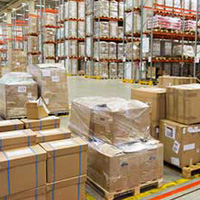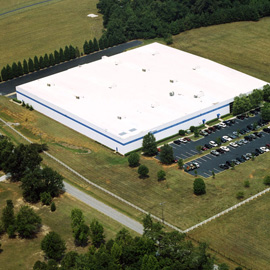Using Stretch Film Successfully so You Don't Stretch Your Budget
If you have ever flown anywhere, you know how banged up a suitcase can get after one flight. You think to yourself, "what in the world happened between the start of my trip and arriving at my destination?" As a manufacturer, you do not want this to be the case for your products during transit. You want them to look just as good as they did fresh off the assembly line, while keeping costs low. Assessing your current usage of stretch film, sometimes referred to as stretch wrap or stretch wrap film, can help you do just that, along with helping you establish better practices as a whole.
Why Use Stretch Wrap?
Most commonly, stretch film is the plastic material you see wrapped around boxes that are stacked together on a pallet during transit or storage. Using stretch film gives your product that extra step of protection, ensuring that it arrives safe and sound, free of dirt, debris, or moisture.
Why is stretch film evaluation so important?
- Damage reduction
- Reductionof the wrapping cycle time
- Commodity reduction
- Improved sustainability
- Improved productivity and efficiency
 Are you using stretch film effectively?
Are you using stretch film effectively?Criteria for Stretch Film Evaluations:
Below are some commonly used phrases when talking about stretch film. You might hear these when evaluating how much "bang for your buck" you are getting with your current stretch wrapping process.
1. Pre-Stretch = Yield
This is the amount of stretch in the equipment's pre-stretch rollers.
2. Force-to-Load = Containment
The force-to-load measures the holding force of the film needed on the load to maintain its integrity. Containment force must be consistent from top to bottom, creating a single package or unit. Any inconsistencies will cause the load to shift.
3. Cut and Weight = Cost Per Load
This is exactly what it sounds like. This involves cutting the film off and weighing it normally via a digital scale. It is the only way to gauge what you are paying per load.
Determine Wrapping Standards and Savings:
Very few customers have established standards on how to wrap their products and even if there is a standard set, very few customers are wrapping to that standard. Although customers are promised film savings, most are not getting the savings that they should.
Lowest Cost Effectively Shipped:
1. Thicker Film = Lower Film Cost
2. Higher Force to Load = Improved Productivity
3. Fewer Revolutions = Lower Labor Costs
Methods to Achieve "Lowest Total Cost":
Reduce Wraps -When reducing wraps, the goal is to reduce the number of film rotations without decreasing load containment. The wrapping cycle time will also go down as an added bonus.
Down Gauge -A gauge is a measurement of how thick the film for shrink wrap is. By down gauging, one uses a thinner stretch wrap film to produce the same result as one would have when using a thicker stretch film for the same purpose. Using this technique, the film must have high stretch ability, puncture resistance, and must have a good cling and holding force.
Up Gauge -The objective of up-gauging is to improve film utilization by increasing the pre-stretch percentage on the stretch wrapper. Up-gauging prevents the film from tearing at the new pre-stretch settings.
Pre-Stretched Film -During this process, stretch film is stretched before being applied to a shipment.Pre-stretched films are stretched close to their ultimate breaking point prior to being wound onto rolls. This meansthat the film does not need as much stretching energy as the standard stretch film to have the same wrapping force. Pre-stretched film can be cheaper than traditional stretch films, allowing for greater cost savings.






